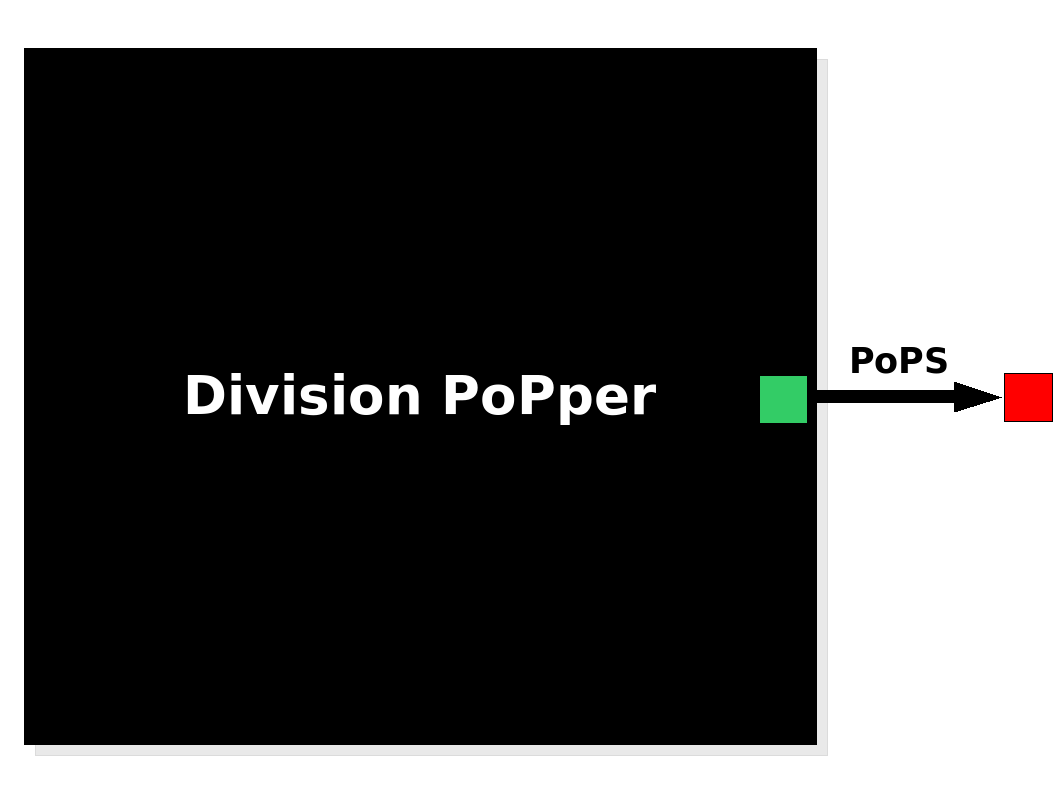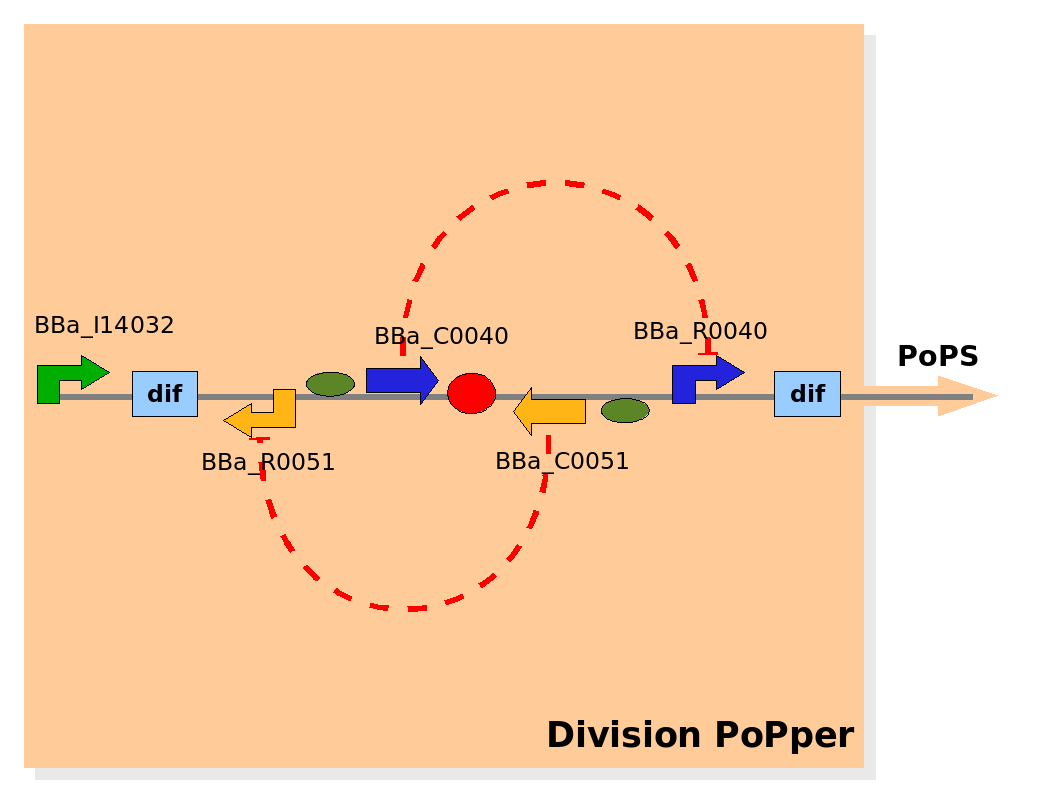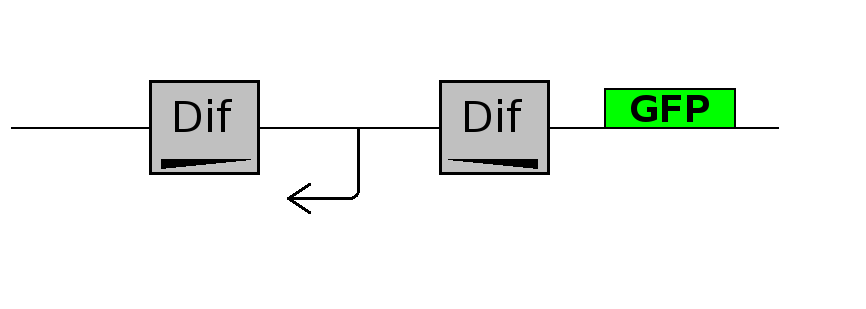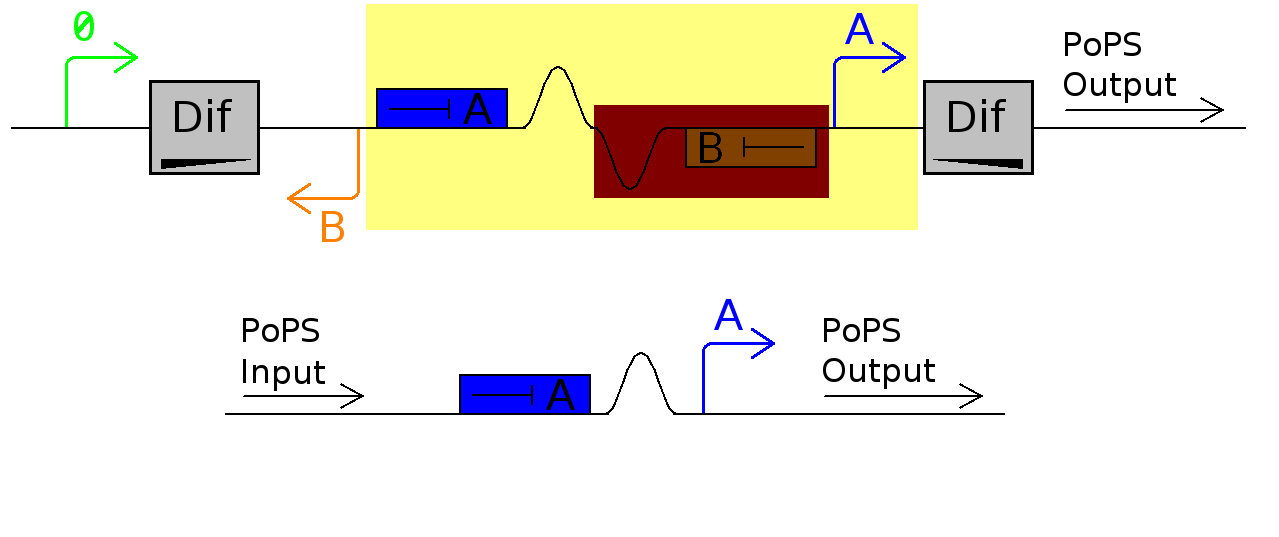Edinburgh/DivisionPopper/Design
From 2007.igem.org
Luca.Gerosa (Talk | contribs) (→Static Design) |
Luca.Gerosa (Talk | contribs) |
||
| Line 1: | Line 1: | ||
'''MENU''' :[[Edinburgh/DivisionPopper| Introduction]] | [[Edinburgh/DivisionPopper/References|Background]] | [[Edinburgh/DivisionPopper/Applications|Applications]] | [[Edinburgh/DivisionPopper/Design|Design]] | [[Edinburgh/DivisionPopper/Modelling|Modelling]] | [[Edinburgh/DivisionPopper/Status|Status]] | [[Edinburgh/DivisionPopper/Conclusions|Conclusions]] | '''MENU''' :[[Edinburgh/DivisionPopper| Introduction]] | [[Edinburgh/DivisionPopper/References|Background]] | [[Edinburgh/DivisionPopper/Applications|Applications]] | [[Edinburgh/DivisionPopper/Design|Design]] | [[Edinburgh/DivisionPopper/Modelling|Modelling]] | [[Edinburgh/DivisionPopper/Status|Status]] | [[Edinburgh/DivisionPopper/Conclusions|Conclusions]] | ||
| - | In the Design section we define the architecture (static design) and the mechanisms (dynamic design) of the device. Following the abstraction levels we propose the view at the level of device, parts and DNA. Regarding to the dynamics we explain which are the biological processes involved. | + | In the Design section we define the architecture (static design) and the mechanisms (dynamic design) of the device. Following the abstraction levels we propose the view at the level of device, parts and DNA. Regarding to the dynamics we explain which are the biological processes involved and how they cooperate in defining the behaviour of the device. |
__TOC__ | __TOC__ | ||
Revision as of 15:42, 17 September 2007
MENU : Introduction | Background | Applications | Design | Modelling | Status | Conclusions
In the Design section we define the architecture (static design) and the mechanisms (dynamic design) of the device. Following the abstraction levels we propose the view at the level of device, parts and DNA. Regarding to the dynamics we explain which are the biological processes involved and how they cooperate in defining the behaviour of the device.
Contents |
Static Design
In this section we explain which are the components of the device and how they are connected logically and physically. The view on the device is given following the abstraction hierarchy proposed in the Registry of Parts.
| Device abstraction level of the Division Counter |
 The Division PoPper device generates an input in the form of PoPS signal. The Division PoPper device generates an input in the form of PoPS signal.
|
Device level
| Part abstraction level of the Division Counter |
 Parts structure in the Division PoPper device. Parts structure in the Division PoPper device.
|
Part level
The Division PoPper parts are:
- two dif sites sequences.
- a promoter A that can be repressed by protein A.
- a coding region for protein A.
- a promoter B that can repressed by protein B.
- a coding region for protein B.
- a promoter P.
This device outputs a PoPS pulse at each cell division. It can be hooked up to another device such as a counter.
DNA level
Dynamics Design
For this device to work, dif site-enclosed DNA needs to flip but once per division. Like all recombination sites, dif-sites are directional and bacteria uses directly repeated dif-sites to resolve genome dimers. Research shows that this resolution occurs only at septation, and we use this temporal control to inverse a plasmid-kept sequence to induce different functions. In its current configuration, Promoter A is repressed by continually produced Repressor A. At this time, no Repressor B is produced.
As cell division occurs, DNA enclosed by two inverted dif sites is reversed. Initially there is no Repressor B present in the cell so Promoter B produces PoPS output. As time passes, Repressor B production is turned on and 'turns off' Promoter B. Meanwhile Repressor A is no longer produced and degrades so that, at the next division, Promoter A can produce PoPS output and the process repeats.
Assumptions
- The Dif sites flip only once during each cell division
- Repressors A and B are produced and degrade faster than the cell cycle
- Promoter B does not interfere with production of repressor A
Proof of Concept
As stated before, the device relies on the dif site flipping only once per cell division. To test whether or not this actually happens, we have devised two simpler experiments.
Exp 1
This experiment will prove whether or not the DNA between the two dif sites flip at all during cell division. If the a flip occurs, then the direction the promoter operates will be changed and GFP will be expressed.
Exp 2
This investigates the number of flips that occurs during division and will require rapidly degrading fluorescent proteins.
After each division we expect to see a change in colour as the promoter activates a different reporter.
Exp 3
Currently we are planning to test how the dif sites flip using exps 1 & 2. The final device requires a few more parts, each of which needs to be tested.
We might wish to test the repressors without the dif sites
The repressor part of the system is simply a pair of inverters.
There are 3 basic types of inverter in the registry:
- TetR BBa_Q04400 “this inverter functions well. [jb, 5/24/04]”
- CI (Lambda) BBa_Q04510 “this inverter functions well. [jb, 5/24/04]”
- LacI BBa_Q04121 "a strong 'on' state with significant background in the 'off' state. [jb,5/24/04]”
exp 3 design
This will test to see if promoter B causes problems with promoter 0's promoting repressor A and tests the standard repressor inverter found in the registry.
Parts required:
- Promoter 0 – suggest BBa_I0500 (arabinose) – Plate 2, 9I
- Promoter B – reverse complimentary lacI promoter – Used in exp 1
- Inverter – suggested BBa_Q04510 (CI (Lambda)) – Plate 2, 13K
- Reporter – use same as experiment 1
Biobricks Required
Biobricks From Registry
| Part | For use in | Brick used |
|---|---|---|
| Reporter | Exp1, Exp2, Exp3 | BBa_E0422 - Fast Degrading ECFP |
| Inverter | Exp3 | BBa_Q04510 - CI (Lambda) Inverter |
| Promoter 0 | Exp3, Final PoPper | |
| Promoter A | Final PoPper | |
| Repressor (+RBS) A | Final PoPper | |
| Central Terminator | Final PoPper |
Biobricks requiring construction
| Part | For use in |
|---|---|
| Dif sites | Exp1, Exp2, Final PoPper |
| Reversed Promoter B | Exp1, Exp3, Final PoPper |
| Reversed Repressor (+RBS)B | Final PoPper |




